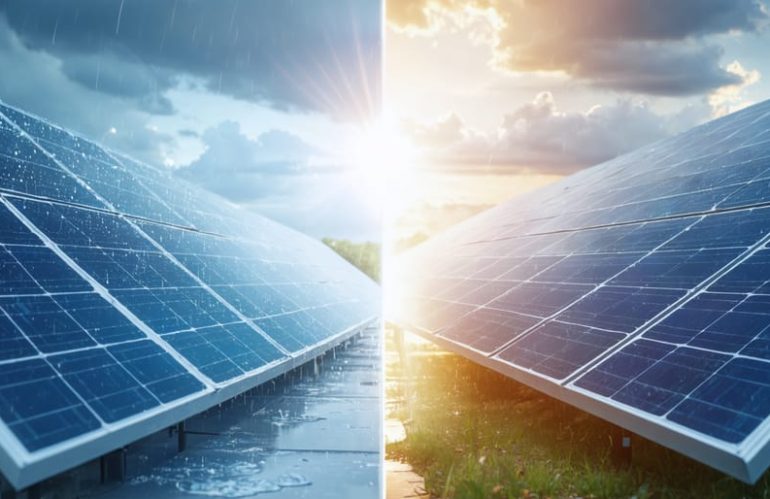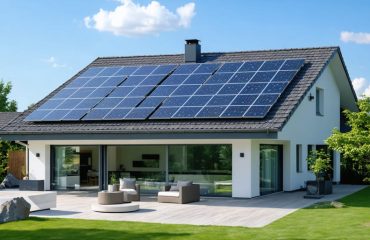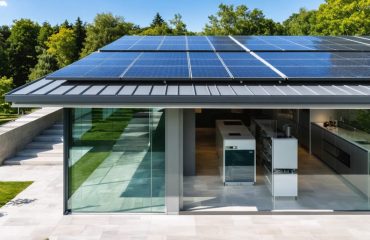Solar energy has revolutionized the way we power our homes and businesses, offering remarkable environmental benefits and potential cost savings. However, like any technology, it comes with its own set of challenges that deserve careful consideration. Whether you’re contemplating a solar installation or simply researching sustainable energy options, understanding these limitations is crucial for making an informed decision. While solar power continues to advance and overcome many obstacles, seven key disadvantages still impact its widespread adoption. From initial investment costs to weather-dependent performance, these factors can significantly influence your solar journey. Let’s explore these challenges through a balanced lens, helping you determine if solar energy aligns with your specific situation and energy needs.
This introduction:
– Acknowledges solar’s benefits while setting up the discussion of disadvantages
– Maintains an informative, balanced tone
– Speaks directly to homeowners considering solar
– Avoids technical jargon
– Sets expectations for the detailed discussion to follow
– Remains solution-oriented despite discussing challenges
– Appeals to both environmentally-conscious and financially-motivated readers
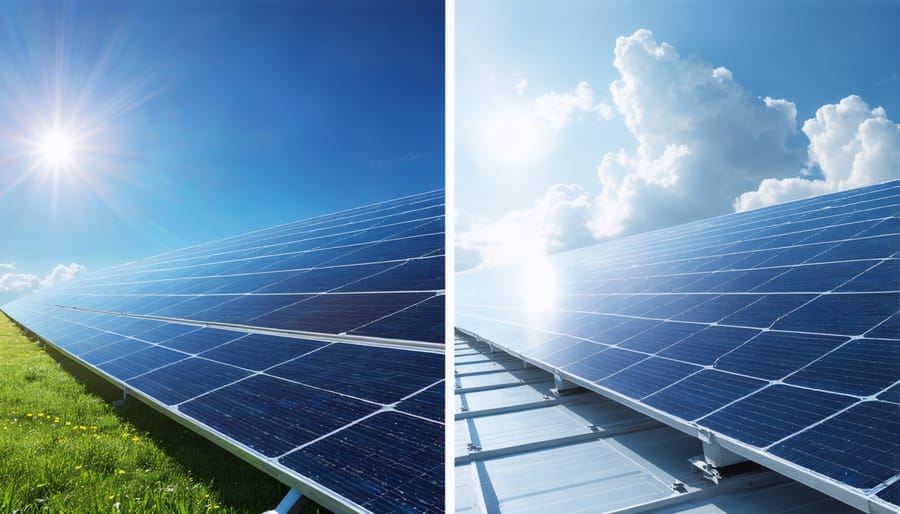
Weather-Dependent Performance Issues
Cloudy Climate Challenges
One significant challenge of solar energy is its dependence on clear skies for optimal performance. While solar panels can still generate electricity on cloudy days, their efficiency typically drops to 10-25% of their normal output. This reduction means homes in regions with frequent cloud cover, like the Pacific Northwest or New England, may require larger solar arrays to meet their energy needs.
However, it’s important to note that some of the world’s leading solar energy producers, like Germany, experience considerable cloud coverage throughout the year. Modern solar technology has evolved to perform better in overcast conditions, and strategic panel placement can help maximize energy collection even on cloudy days. Additionally, net metering programs allow homeowners to bank excess energy generated on sunny days to offset reduced production during cloudy periods, helping to maintain consistent power supply year-round.
Snow and Ice Accumulation
Snow and ice accumulation during winter months can temporarily reduce solar panel efficiency. When snow covers your panels, they can’t absorb sunlight effectively, leading to decreased energy production. However, this issue isn’t as severe as many think. Most solar panels are installed at an angle, allowing snow to naturally slide off as temperatures rise. The dark surface of solar panels also helps them warm up quickly, melting snow faster than surrounding surfaces.
Modern solar panels are engineered to withstand heavy snow loads, and many regions with significant snowfall, like Germany and Canada, successfully use solar energy. While you might need occasional snow removal during heavy storms, the annual energy loss from snow coverage typically amounts to only 2-5% of total production. Plus, the cold temperatures actually help solar panels operate more efficiently when they’re clear of snow, partially offsetting any winter losses.
Initial Investment Considerations
The significant upfront cost of solar installation remains one of the primary concerns for homeowners considering solar energy. A typical residential solar system can range from $15,000 to $25,000 before incentives, depending on your location and energy needs. While this investment may seem substantial, it’s important to understand that prices have dropped by more than 70% over the past decade.
Regional variations can significantly impact your initial costs. For instance, installation expenses tend to be higher in areas with stricter building codes or limited solar contractor competition. Labor costs also vary considerably between urban and rural locations, with metropolitan areas often commanding premium rates.
Equipment quality and system size play crucial roles in determining costs. Premium panels with higher efficiency ratings and longer warranties naturally cost more than standard options. Additionally, if your roof requires structural modifications or you opt for battery storage systems, these additions can increase your initial investment by several thousand dollars.
However, various financial incentives can help offset these costs. Federal tax credits, state rebates, and local incentives can reduce your out-of-pocket expenses by 26-50%. Many homeowners also have access to solar loans, leases, or power purchase agreements (PPAs) that can eliminate or significantly reduce upfront costs, though these financing options may affect long-term savings.
Storage System Requirements
While solar panels generate power during daylight hours, storing that energy for nighttime use or cloudy days requires a comprehensive battery system. Solar batteries represent a significant upfront investment, typically ranging from $5,000 to $15,000 for a residential setup. These storage systems need regular maintenance and usually require replacement every 10-15 years, adding to the long-term costs of your solar installation.
The capacity of your battery system must be carefully calculated to meet your household’s energy needs. Most homeowners need multiple batteries to store enough power for continuous operation, especially during extended periods of limited sunlight. The physical space required for battery installation can also be substantial, potentially requiring a dedicated storage area in your garage or utility room.
While battery technology continues to improve and prices are gradually decreasing, the current cost of energy storage remains a significant consideration when planning a solar installation. However, for many homeowners, the long-term benefits of energy independence and reduced utility bills can offset these initial expenses. Additionally, various tax incentives and rebates may help minimize the impact of battery storage costs on your solar investment.
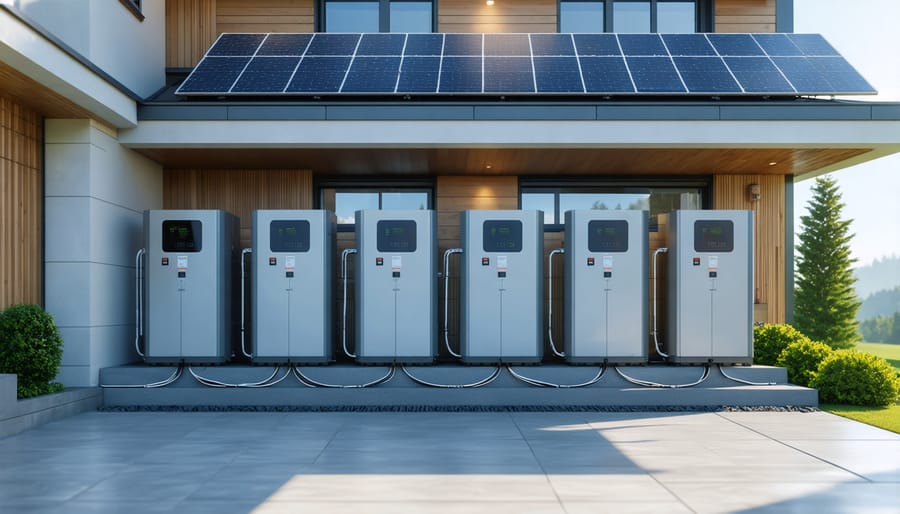
Space and Installation Constraints
Before installing solar panels, homeowners need to consider their property’s spatial requirements and structural limitations. Not every roof is ideal for solar installation, as factors like size, orientation, and shape play crucial roles in home solar system design.
A typical residential solar setup requires approximately 100-400 square feet of roof space for every 10 panels installed. This space must be largely unobstructed by chimneys, vents, or satellite dishes. Additionally, roofs should ideally face south (in the Northern Hemisphere) and have a pitch between 30-45 degrees for optimal solar energy collection.
Structural considerations are equally important. Older homes may need roof reinforcement to support the additional weight of solar panels, which typically add about 2-4 pounds per square foot. Some properties might also face restrictions due to homeowners’ association rules or local building codes.
For homes with limited roof space or unsuitable roof conditions, ground-mounted systems offer an alternative solution. However, this option requires sufficient yard space and may impact landscaping or outdoor living areas. Despite these constraints, creative solutions and professional assessments can help overcome most spatial challenges.
Maintenance Requirements
While solar panels are generally low-maintenance, they do require regular upkeep to maintain optimal performance. Regular cleaning is essential to remove dust, leaves, bird droppings, and other debris that can reduce energy production by up to 25%. Most homeowners need to clean their panels 2-4 times per year, depending on local weather conditions and environmental factors.
Professional inspections are recommended annually to check for any damage, loose connections, or degrading components. These inspections help ensure your resilient solar installation continues operating at peak efficiency and can identify potential issues before they become costly problems.
Snow removal may be necessary during winter months, though many panels are designed to shed snow naturally. Additionally, monitoring system performance through your inverter or solar app is important to catch any unexpected drops in energy production that might indicate maintenance needs.
While these maintenance requirements aren’t particularly demanding, they do represent an ongoing commitment of time and resources. Some homeowners opt for professional cleaning and maintenance services, which can add to the overall cost of solar ownership but ensure proper care of their investment.
Environmental Impact Considerations
While solar energy is generally considered environmentally friendly, the manufacturing and disposal processes of solar panels do raise some environmental concerns. The production of solar panels requires significant energy and raw materials, including silicon, glass, and various metals. This manufacturing process generates greenhouse gas emissions and can involve the use of toxic chemicals.
Additionally, solar panels have a lifespan of 25-30 years, after which they need to be replaced. The disposal of old panels presents a growing challenge as they contain materials that can be harmful if not properly recycled. While recycling programs for solar panels are becoming more common, the infrastructure is still developing in many regions.
However, it’s important to note that these environmental impacts are relatively minor compared to traditional energy sources. The carbon footprint of solar panel production is typically offset within 1-4 years of operation, and manufacturers are continuously improving their processes to reduce environmental impact. Many companies now offer take-back programs and sustainable disposal options, helping to address end-of-life concerns proactively.
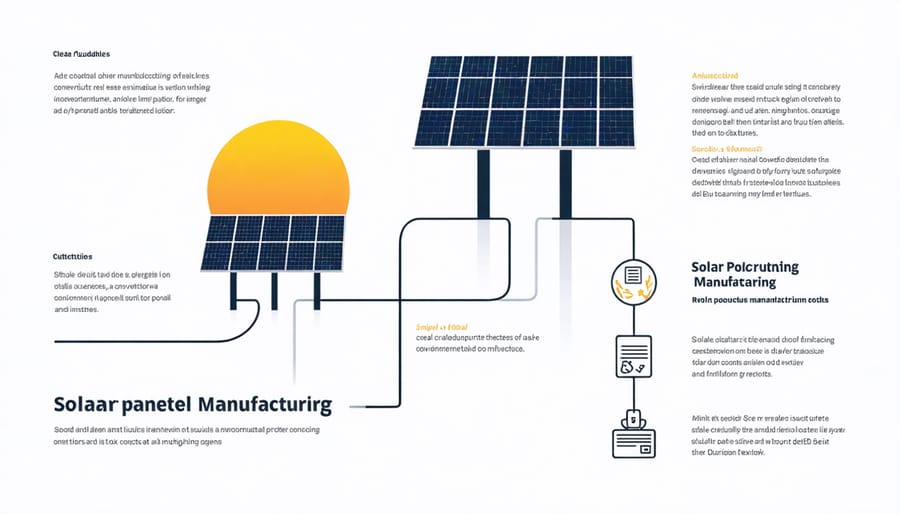
While solar energy faces certain challenges, these disadvantages shouldn’t discourage homeowners from considering this renewable energy source. Many of these obstacles can be overcome through careful planning, technological advancements, and smart implementation strategies. The initial costs continue to decrease as solar technology becomes more efficient and accessible. Energy storage solutions are improving rapidly, making intermittency less of a concern. Additionally, many regions offer incentives and tax breaks to offset installation expenses. By working with qualified installers, choosing appropriate system sizes, and staying informed about local regulations, homeowners can maximize their solar investment while minimizing potential drawbacks. The future of solar energy looks promising, with ongoing innovations addressing current limitations and making this clean energy option increasingly practical for everyday consumers.

